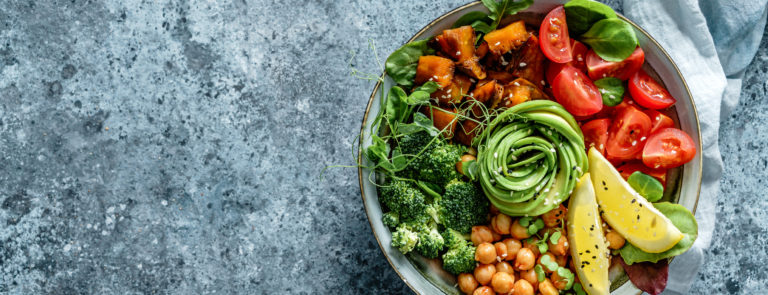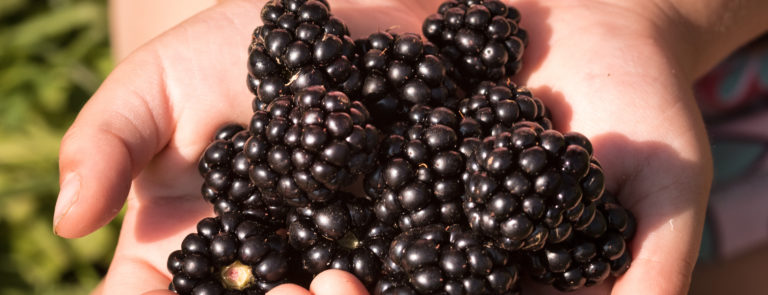15% off €30 OR 20% off €40
Guide to gluten free bread: Types, benefits & more
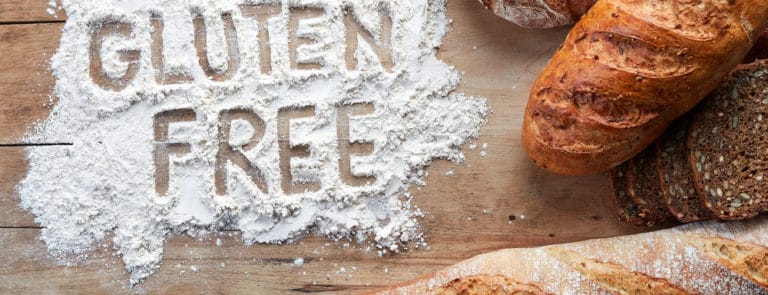
Is whole grain gluten free? What flours should you avoid? Is gluten free bread healthy? And where can you find a healthy gluten free bread recipe? Here, we explain what you need to know about choosing the best gluten free bread and give you a helping hand with choosing the right ingredients to make your own wheat-free loaf.
What is gluten?
Gluten is a sticky protein found in certain grains and is commonly used to bind dough together.
The binding action of gluten works to reduce crumbling, so foods remain solid. It also helps maintain softness and moisture. All these things combine to give bread its springy texture, a pleasant chewiness, and a longer shelf-life.1
Does all bread contain gluten?
Gluten gives a fresh white loaf a nice bit of bounce and allows us the satisfaction of stretching out the inner layers of a croissant. Most traditional baking methods rely on gluten in some form. In fact, you find the protein lurking in most bread products, including:
- Bread
- Rolls
- Pizza bases
- Other food that started out as dough
But if your gut can’t tolerate the protein, bread needn’t be off the menu entirely. Food experts are finding clever ways to eliminate the gluten from our favourite foods, without losing the taste and texture that makes them so special. As a result, more and more gluten free bread alternatives are appearing on shop shelves.
Summary
- Gluten is a protein present in certain grains
- It’s what gives conventional bread a fluffy texture and stretchy consistency
- Gluten free bread alternatives are now widely available
What does gluten free mean?
A gluten free diet is a way of eating where foods containing certain grains are eliminated. This is primarily wheat, barley and rye.
Some foods that usually contain these gluten-loaded grains (such as bread and pasta) can be made using substitute flours and grains.
These foods are described as gluten free and are suitable and safe for people with a gluten intolerance, gluten allergy or coeliac disease.
What is gluten free bread?
If you’re looking for the short answer to what bread is gluten free, it’s any loaf that’s made from a dough that doesn’t contain wheat, rye or barley. Instead, grains and flours that are naturally gluten free are used in their place.
Summary
- People who are sensitive to gluten are advised to follow a gluten free diet
- A wide range of gluten free food products are available, including gluten free bread
- To bake gluten free bread, wheat, barley and rye, are substituted with alternative gluten free flours
How to know if your bread is gluten free
Nowadays gluten free bread will look very similar to your traditional loaf. So, the best way to tell whether a bread contains gluten is to look out for any off-limits grains on the product’s food label. Here’s where to look:
- First, check the allergen warning for wheat.
- Next look at the ingredients list. If wheat, spelt, barley, or rye are listed anywhere in the ingredients, the bread contains gluten. But there are also some less familiar sources to look out for as well.
Does rye bread have gluten? Is sourdough gluten free?
They don’t have the fluffiness of a standard white loaf or the bounce of a wheat-based wholemeal bread, but this isn’t down to a lack of gluten.
In reality many sourdoughs are baked using wheat, so you need to look specifically for a loaf made with a gluten free grain.
And if you’re looking for gluten free rye bread, prepare to be disappointed. This grain is unsuitable for anyone following a gluten free diet.
Does yeast contain gluten?
The fresh yeast that’s used for baking bread is naturally gluten free. However, there are some brands that add wheat starch to dried yeast products, so it’s always worth checking the ingredients labels.2
Grains that contain gluten
When gluten-avoiders ask – is spelt gluten free? – they’re often surprised to hear it’s a grain they should give a wide berth. The truth is gluten crops up in some surprising, hidden sources. Here, we share some common and lesser-known gluten-laden bread ingredients.
-
Wheat
Conventional wheat is cultivated to maximize its gluten content. This makes it perfect for baking a bouncy loaf, but it’s also why it’s best avoided if you’re sensitive to gluten.
-
Spelt
This ancient form of wheat contains less gluten than conventional wheat, and a slightly different type of the protein. However, studies suggest it provokes the same negative reaction as wheat in people with coeliac disease.3
-
Einkorn
Another more primitive grain with a lower gluten content that can make it easier to digest. But until it’s understood more, it’s best avoided by coeliac sufferers.4
-
Durum
As a variety of wheat, a dose of gluten comes in bread made with this grain.
-
Emmer
An ancient wheat that, like einkorn, has a simpler gluten structure than modern wheat. Despite a lower gluten content, people with coeliac disease are still advised to avoid this grain.
-
Farro
This describes a collection of three ancient wheat species – spelt, einkorn and emmer. When listed as an ingredient it could refer to any of these three gluten-containing grains.
-
Barley
One of the three primary grains to avoid if you’re sensitive to gluten. Barley contains hordein – this is a different type of gluten to that found in wheat.5
-
Rye
Is rye bread gluten free? Looks can be deceiving. Rye contains a type of gluten protein called secalin and is one of the three primary grains gluten-avoiders should have on their radar.
-
Kamut (proper name Khorasan wheat)
As a wheat variant, it’s a gluten-containing grain. Although many argue it can be easier to digest than conventional wheat.6
-
Triticale
This wheat and rye hybrid flour is lower in gluten than a typical bread flour, but as a consequence it makes a heavier bread.7
Are whole grains gluten free?
It’s important to note that not all grains are off-limits if you’re gluten intolerant. Although whole wheat, rye, and barley are off the menu, there are plenty of other whole grains to choose from that may be easier for you to digest.
These whole grains often feature in healthy gluten free bread recipes.
Summary
- Appearances can be deceiving – always check a bread’s allergens list and ingredients label for hidden sources of gluten
- Wheat, rye and barley are the main grains to look out for
- There are also other wheat varieties with less familiar names that you should also have on your radar
Which grains are gluten free?
Naturally gluten-free grains include buckwheat, millet, rice, teff, and sorghum. Oats are technically gluten-free but can be cross-contaminated during processing or packing. To be certain when buying, it's important that you choose gluten-free oats.
What is in gluten free bread?
The taste, texture and appearance of a gluten free loaf will differ depending on the type of flour or flours used in the dough mix. To give you an idea of the range of options, here are some examples of gluten-free flours:
1. Buckwheat flour
The rich, earthy flavour of this pseudo-cereal works well in bread. But it can be a little crumbly, so it’s best combined with another gluten free flour.
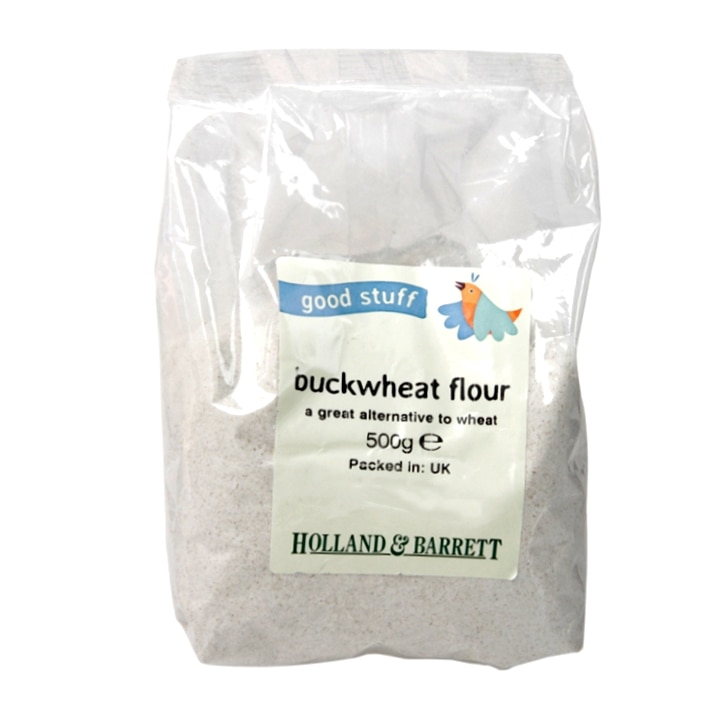

2. Millet flour
Being finely ground and soft, it can give your gluten free bread a lighter texture than some of the alternatives in this list.
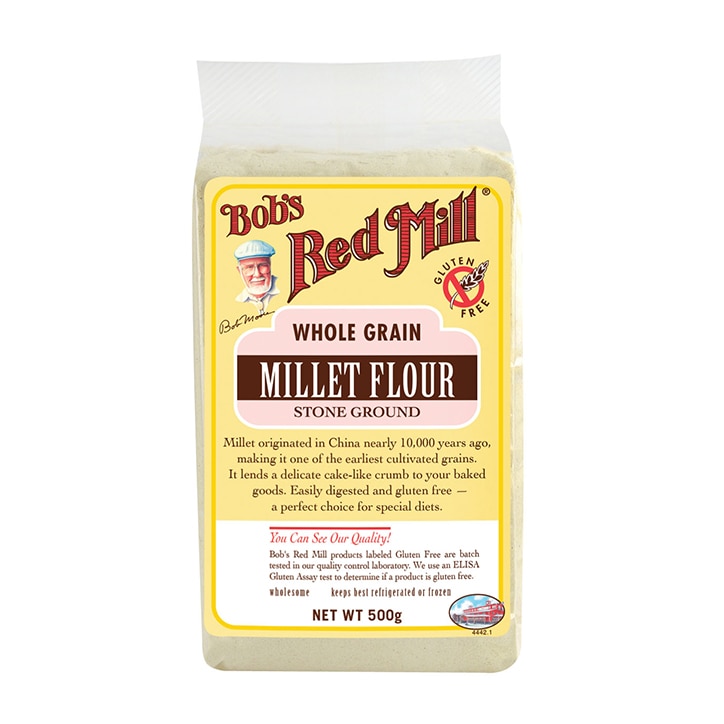

3. Teff flour
It’s one of the world’s smallest grains but it has plenty of nutritional value. It has a mild flavour and works well mixed with almond flour and buckwheat flour.
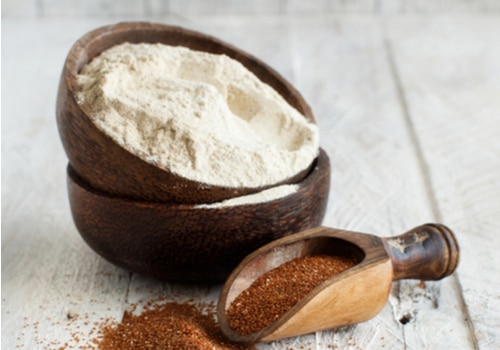

4. Cassava flour
It’s probably the most similar to conventional wheat flour. This is mainly due to having a very neutral taste.
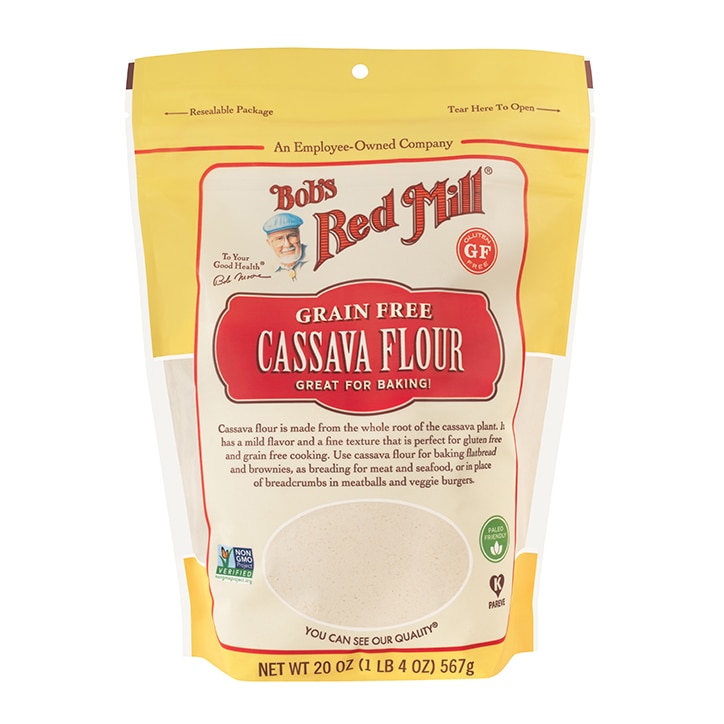

5. Coconut Flour
It has a similar texture to wheat flour, which makes it ideal for bread. But beware, it absorbs lots more liquid than other flours.
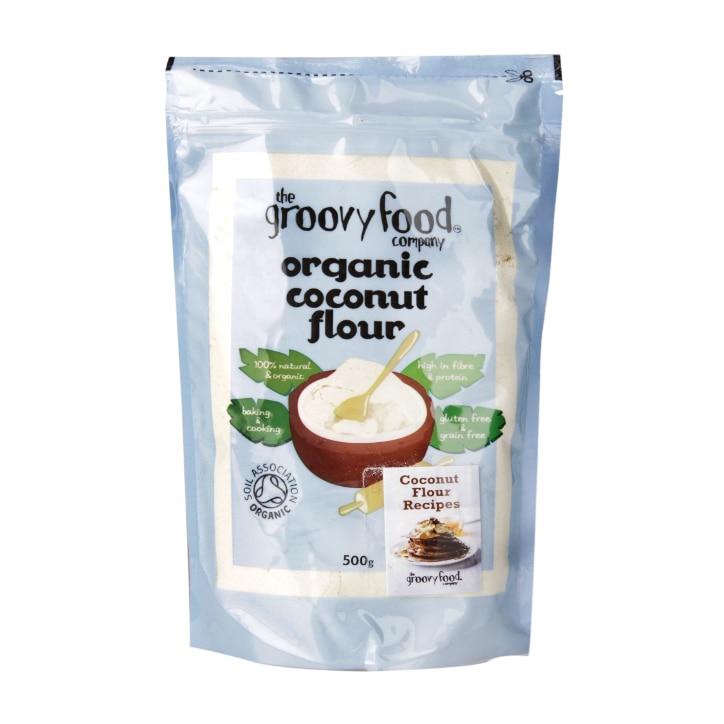

6. Sorghum
It has a very light, mildly sweet taste, but can produce quite a heavy bread. Sorghum is often used when only small amounts are needed or mixed with other flours.
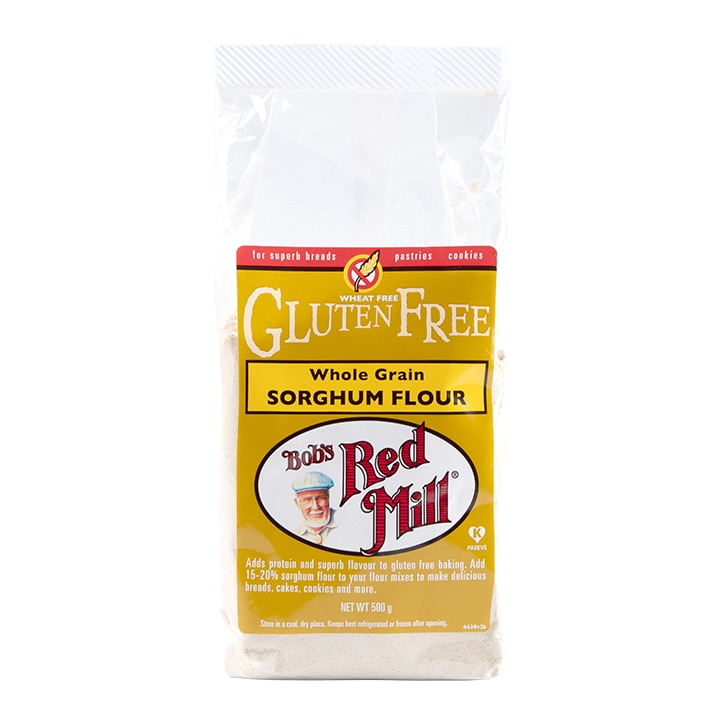

7. Amaranth flour
Amaranth is a pseudo-grain that’s packed with nutritious value. It has a mild, nutty flavour and is usually mixed with other flours when making bread.
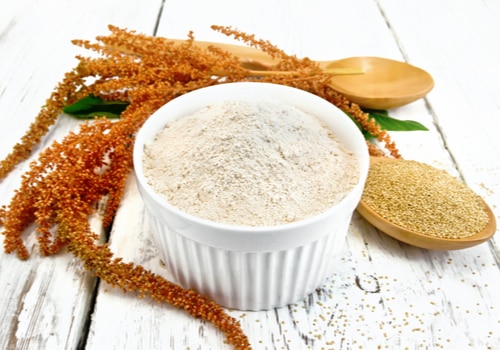

8. Almond flour
Almond flour is easy to use and produces a light but sturdy loaf. An extra egg and psyllium can be mixed into the dough to help add structure, stretch and softness.8
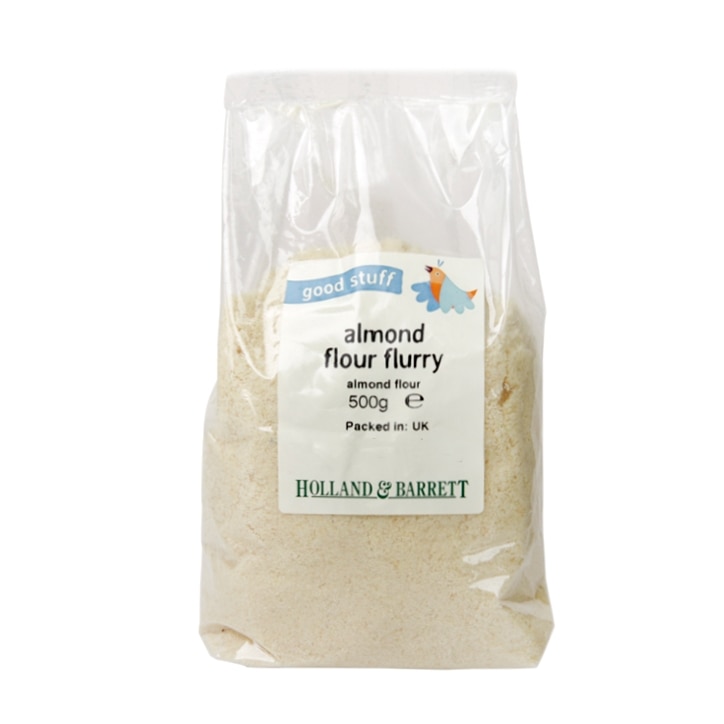

Summary
- If you’re avoiding or eliminating gluten, it’s important to know which grain flours are safe for you to eat
- Finding the best gluten free bread flour will depend on your taste and texture preferences
- Gluten free flours are often mixed together to achieve a more conventional bread-like consistency
Is gluten free bread healthy?
If you can’t tolerate gluten, eating even small amounts of the protein can lead to uncomfortable intestinal symptoms.
So, there are many wellness benefits of eating gluten free bread for people with gluten intolerance or coeliac disease.
However, going gluten-free without a specific health reason is less likely to lead to benefits and isn’t generally recommended.9
Benefits of going gluten free
There are positive reasons for choosing gluten-free grains. Amaranth is packed with vitamins and minerals, including vitamin C, and it contains more protein than any other whole grain.
Buckwheat is a good source of zinc, copper, and other minerals. Teff is high in calcium and vitamin C.
But most significantly, if you’re a coeliac sufferer, eating gluten triggers an adverse reaction by your immune system.
This shows in symptoms such as diarrhoea, stomach pain and bloating and can cause long-term damage in your gut.
Removing gluten from your diet not only helps to manage uncomfortable symptoms, it also helps to prevent long-term damage and complications. 10
But the motivation of the vast majority of gluten-avoiders is that they have a gluten intolerance of some level (sometimes called non-coeliac gluten sensitivity), and can suffer with fatigue and excess gas if they have gluten in their diets.
Handpicked content: Read more about the benefits of going gluten free.
Summary
- If you have a diagnosed sensitivity to gluten, eating gluten-free bread can help
- Gluten free bread alternatives are widely available in health stores and supermarkets
- Or you can experiment with making your own bread
Conclusion: Seeking gluten free alternatives to bread
Faced with the uncomfortable symptoms of gluten intolerance or allergy, eliminating the protein from your diet seems the most sensible option.
But what happens when you really fancy a slice of toast for breakfast or a sandwich for your lunch?
The good news is eating a gluten-free diet doesn’t mean you have to avoid bread completely.
By substituting wheat, barley and rye with naturally gluten-free grains, it’s possible to bake a yummy gluten-free loaf.
So, with a few smart choices, you can eat bread, stay healthy and enjoy a whole range of meals that you thought you were unable to.
